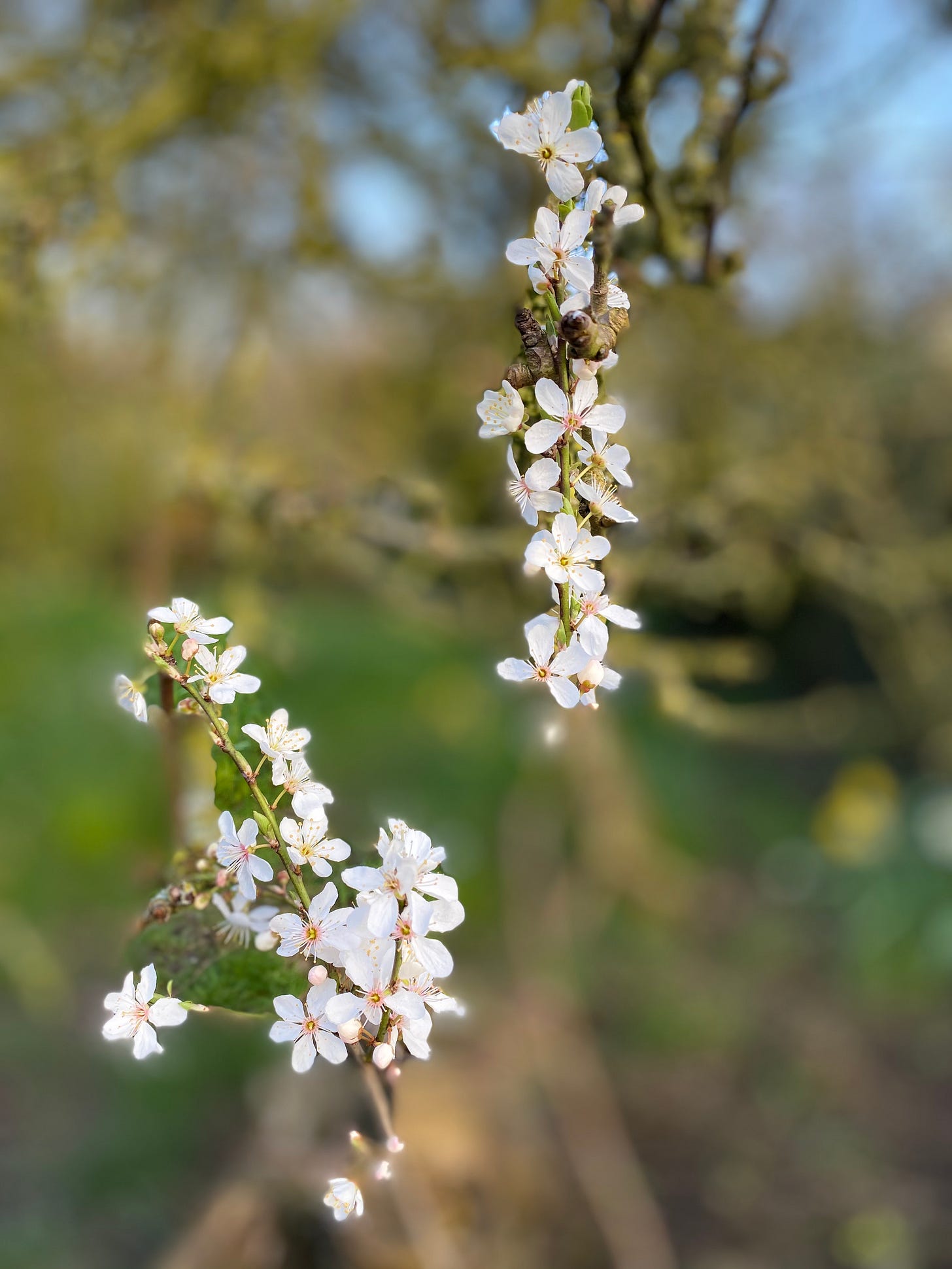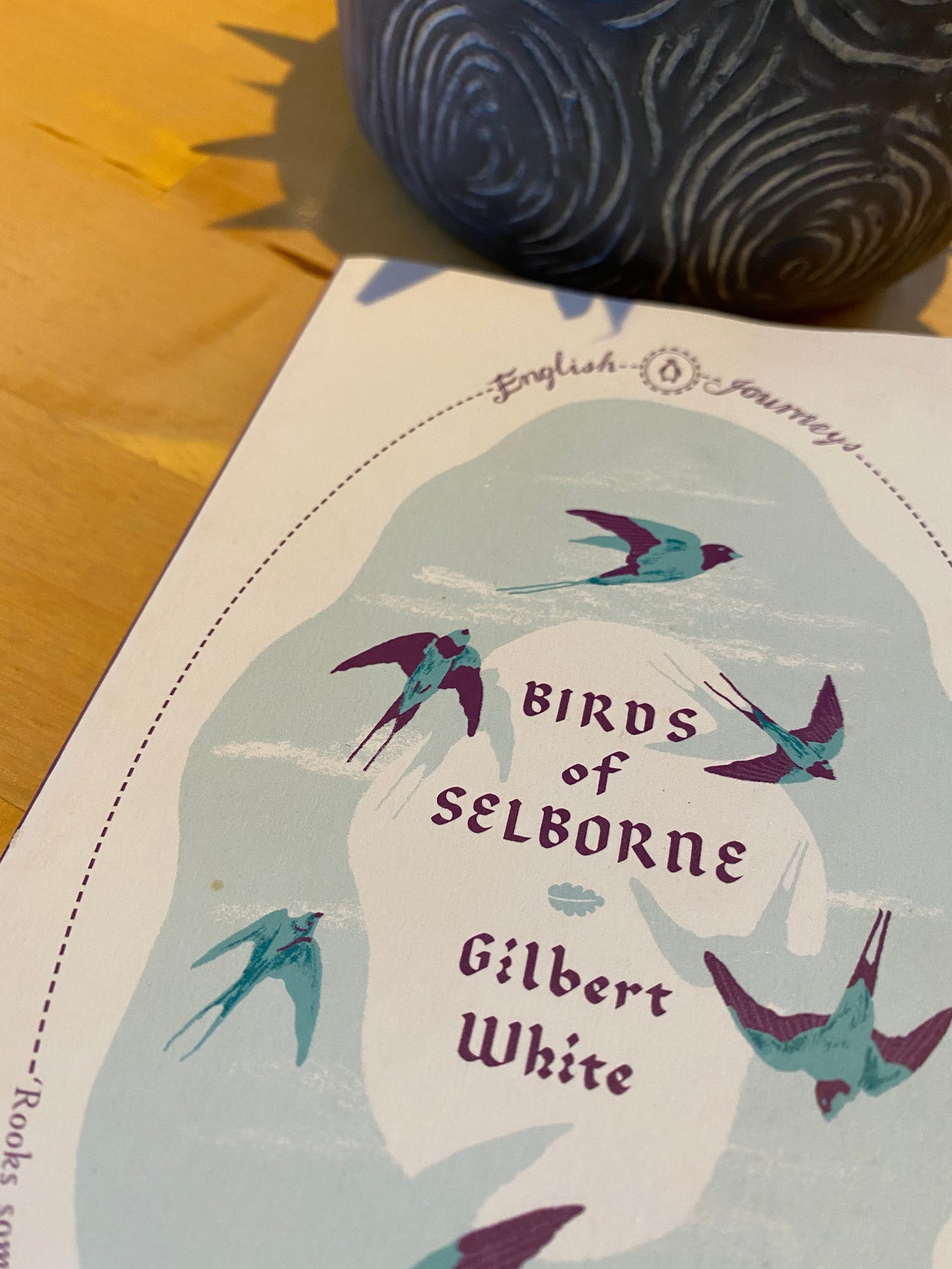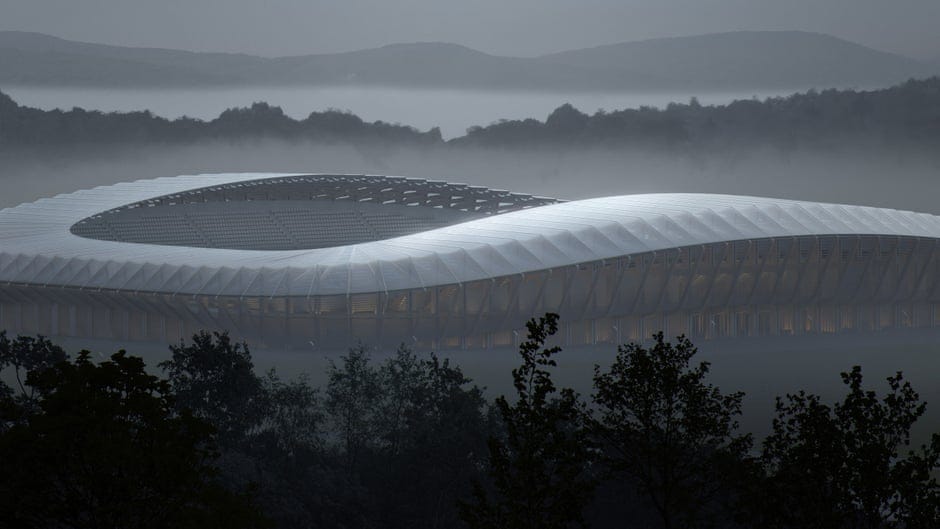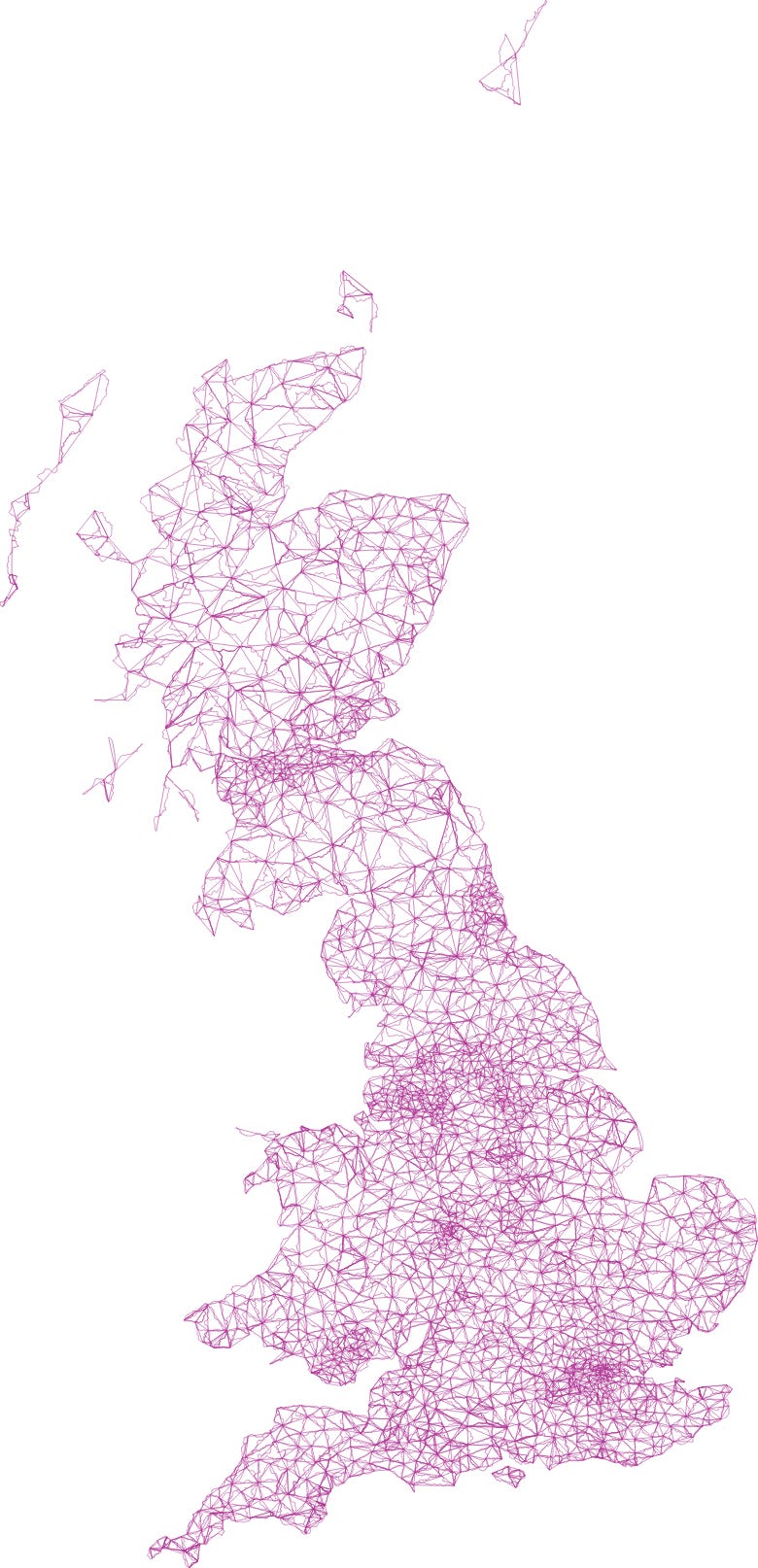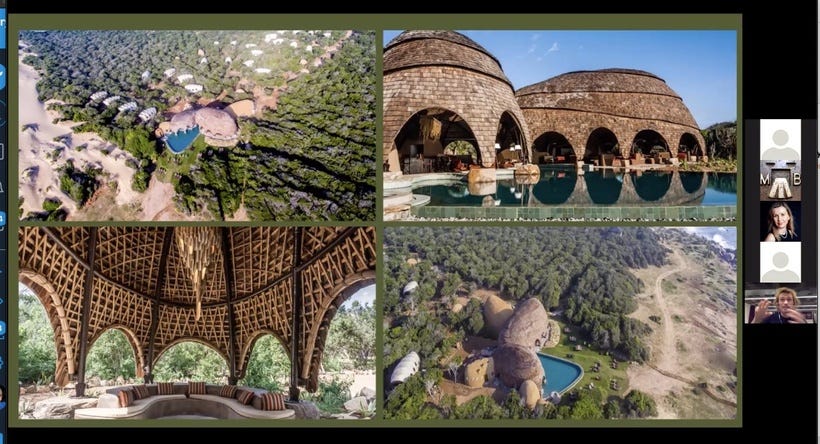Regen Notes #7
Local Nature, Biophilia, Carbon, Modern Slavey, Green Travel, Podcasts, Zoom Regenerative ...
Welcome to Regen Notes, your fortnightly newsletter of regenerative news, stories and more that pass across my newsfeeds, with a sideways focus on the built environment, curated by Martin Brown.
Gilbert White’s Nature Diaries
It is remarkable to note that Gilbert White’s seminal The Natural History of Selborne is the fourth most published book in the English language. (behind only The Bible, the works of Shakespeare and John Bunyan’s Pilgrim’s Progress.) Two articles recently had me reaching for my copy, which remains an excellent example of exploring a locality in great detail and absorbs the reader into a detail of birds, plants, people and community.
Patrick Barkham interviewed the influential Richard Mabey in the Guardian ‘Viruses and man-eating tigers and predatory Asian hornets are all part of nature’ who reminded us that we may not want to connect with all of nature - and better to see ourselves as genuine neighbours and recognise the reciprocity between us and nature Richard Mabey authored a Gilbert White biography.
Meanwhile, the Rohan blog featured Country Walking Features Editor Jenny Walters (The explorer’s guide to your backyard) “300 years ago one man showed us there is a whole world to see right outside your door – advice that in the age of staying local has never been more precious” elevating Gilbert White to the patron saint of “staying local”.
Biophilia - love of life.
That sense of wonder we experience in nature is core to biophilia in creating that love of life within our buildings. On the constantly inspiring blog, BrainPickings, Maria Pickering dipped into Seeking an Aurora: A Wondrous Illustrated Celebration of Earth’s Most Otherworldly Spectacle of Colour.
Biophilia now features regularly in designs, with hints of an emerging Beyond Biophilia movement - one that widens its scope, though mindfulness approaches and inclusion of social and behavioural scientists, psychologists, futurologists and biologists within design teams, to distance evidence-based biophilia from the ‘tokenism’ of a plant in the corner. Not that there is anything amiss with the plant in the corner - we need far more - but on its own, it's not biophilia. The recent Vastu Architecture feature on Zoom Regenerative from John Renwick has certainly opened up my mind to yet another branch of Biophilia - around expanding energies within our homes and buildings. Vastu Shastra is an ancient guide for a positive home, right from the entrance of a home and throughout all areas within.
Carbon - Out of this World.
Plans for the initial sustainable cities on Mars have been unveiled, a design of five cities, with the capital Nuwa. (Nuwa was the mother goddess of Chinese mythology, is credited with creating humanity). Troubling that the plan to use the CO2 and water found on the planet - to generate more carbon and produce steel. Troubling in given how well generating more carbon than a planet can deal with is working out here on Earth.
Back on earth … our ConstructCO2 tool for monitoring and reducing construction phase carbons is being updated to clearly show the projects Scope 1, 2, and 3 carbons and to provide a clear understanding of the EN15978 / RICS A4-A5 carbon. This will enable designers and contractors to access real data in LCA calculations for this aspect of embodied carbon. Watch this space.
Netflix Sustainability Officer, Emma Stewart, shared the Netflix corporate press release announcing their path to #carbonneutrality. Net Zero + Nature Our Commitment to the Environment. (Reduce, Retain, Remove). Noted by many including Eric Corey Freed on LinkedIn, as the way to develop and announce net-zero intentions - “clear, concise, and real with a bold target starting NEXT YEAR!” Within the Netflix release, there are links to a wealth of net-zero information, based around Science-Based Targets, and the formidable independent advisory group of experts who volunteered their time to counsel and provoke Netflix.
To halt global warming, the destination for our economy is clear. We need to reach a state in which human activity no longer causes the accumulation of greenhouse gases in the atmosphere. To get there, we need to achieve a deep and profound elimination of emissions across the global economy.
Building soil health is one of the most powerful actions we can take to restore personal and planetary health. Kiss the Ground - a highly influential film/documentary on regenerative agriculture has launched Soil Advocate Training - a digital 8-module course that will not only teach you the ins and outs of regenerative agriculture.
Just.
Following the quote from Amanda Gorman in Reg-Notes #1 (“what is just, is not always just-ice”) More than Just words, a blog post on Bella Caledonia explores the need for a just transition towards net-zero emissions. a balancing act of recognising historic social and economic injustices that are fundamentally intertwined with our energy, transport, housing, land and economic systems, to avoid exacerbating those injustices or creating new ones going forward. It is also a massive opportunity to actively correct some of them in the process.
Modern Slavery.
Modern Slavery is rightly one of the defining social justice issues in the built environment of recent years. Across the country and around the world, clients are asking modern slavery questions of designers and contractors, contractors have developed programmes and policies and on most construction sites people are delivering or listening to Modern Slavery toolbox talks. Yet in a short while, we will be celebrating the FIFA World Cup build-up to the final in Qatar in 2022.
In a statement Tromsø IL, a top-flight Norweigan club thinks it is time for football to stop and take a few steps back. “We should think about the purpose of football and why so many love our sport. That corruption, modern-day slavery and a high number of workers’ deaths are the fundament to our most important tournament, the World Cup, is totally unacceptable.” Read how this statement is shaking up the football world, and how a Norway boycott of the Qatar World Cup change the future of football?
Meanwhile, Soy of the Rovers: Forest Green Rovers the vegan football club that is kickstarting a green revolution is now certified by the United Nations as the world’s first carbon-neutral football club. The Guardian explores the growing and successful empire of Dale Vince “Britain’s richest hippy”, (energy, football, vegan food) and the recently FA approved Zaha Hadid Architects’ design for a new all-timber stadium.
Greening …
In Devon, timber company UK Hardwoods has constructed the largest UK-grown glulam structure (we think). Insulated with Thermafleece sheep’s wool and heated from waste woodchip, the building took only 4 days to construct, and the whole project took place within a 27-mile radius which included the felling and sawing of the timber, the design, the manufacture and installation.
Gary Grant writing in The Nature of Cities explores why “Vegetation is the Future of Architecture" There is now a huge and growing body of evidence that green infrastructure or green-blue infrastructure (soil, vegetation, and water) that provides the setting for our cities, provides us with a range of benefits (also described as ecosystem services), including a reduction in flooding, purification of air and water, summer shade and cooling, better health and wellbeing, places to relax and mingle, as well as food and habitat for wildlife.
Urban Greening for Biodiversity Net Gain: A Design Guide - The Mayor’s London Plan requires new developments to make urban greening a fundamental element of their site and building design, and to deliver net gains for biodiversity. This guide, produced in partnership with London Wildlife Trust, shows how this can be done through design approaches that also help to create engaging, healthy and resilient places for people too.
Slow, Green, Travel.
One of my lockdown highlights has been involvement with Slow Ways, initially mapping out routes, testing surveys and following the website development and soft launch later this year.
Slow Ways is an important, positive and timely project. Walking can improve health and wellbeing, tackle climate and ecological emergencies, save people money, improve our environment and bring joy to people’s lives.
And in the near future, Google will fundamentally change the logic of Google Maps. Instead of showing the fastest route from point A to point B by default, it will show the greenest route by default. Google calculate factors such as fuel consumption, road incline, and traffic congestion to provide you with a route that is as climate-friendly as possible.
Podcasts
What if every single act of design and construction made the world a better place? It was a delight to chat with Jeffrey Hart as part of his impressive Building Sustainability Podcast series, more so from knowing that Jeffrey’s podcast is highlighted as one of the global Top 50 Sustainability Podcasts You Must Follow in 2021. Kudos! Listen in as I reminisce around my home town of Keynsham where Jeffrey was based at the time of recording.
Ambition, Enthusiasm, Passion.
Zoom Regenerative 29 was a wonderful, beautiful session - from the ambition of Eden Brukman in San Francisco to the passion for bamboo from Freddie Catlow at PlanBoo in Stockholm. The recording and notes are available through Regenerator Patreons
Our next Zoom Regenerative 30 is on the 6th of April and features Emmanuel Pauwels, Regenerative Development Coach at Green Living Projects, sharing insights into his incredible Living Building Challenge home, Cal Guerxo. Registration and Details.
A Zoom Regenerative Earthday special, a hybrid event in Sabden Lancashire, hosted by the wonderful Class of Your Own, in conjunction with RESTORE and Living Future Europe. The full-day session will feature RESTORE Ready presentations and discussions, local regenerative presentations with an educational theme and a series of Pecha Kucha’s on regenerative practice in NW England. Details and registration.
And finally, the ZR Pollinator Tutorials are shaping up for the week of 3 May, exploring regenerative themes of Mind the Regenerative Future, Regenerative Economics, Regenerative Collaborations and The Living Building Challenge, topics that feature regularly in the ZR sessions.
Join me, Anna Williamson and the awesome ZR community as we zoom in and out on regenerative thinking ...



